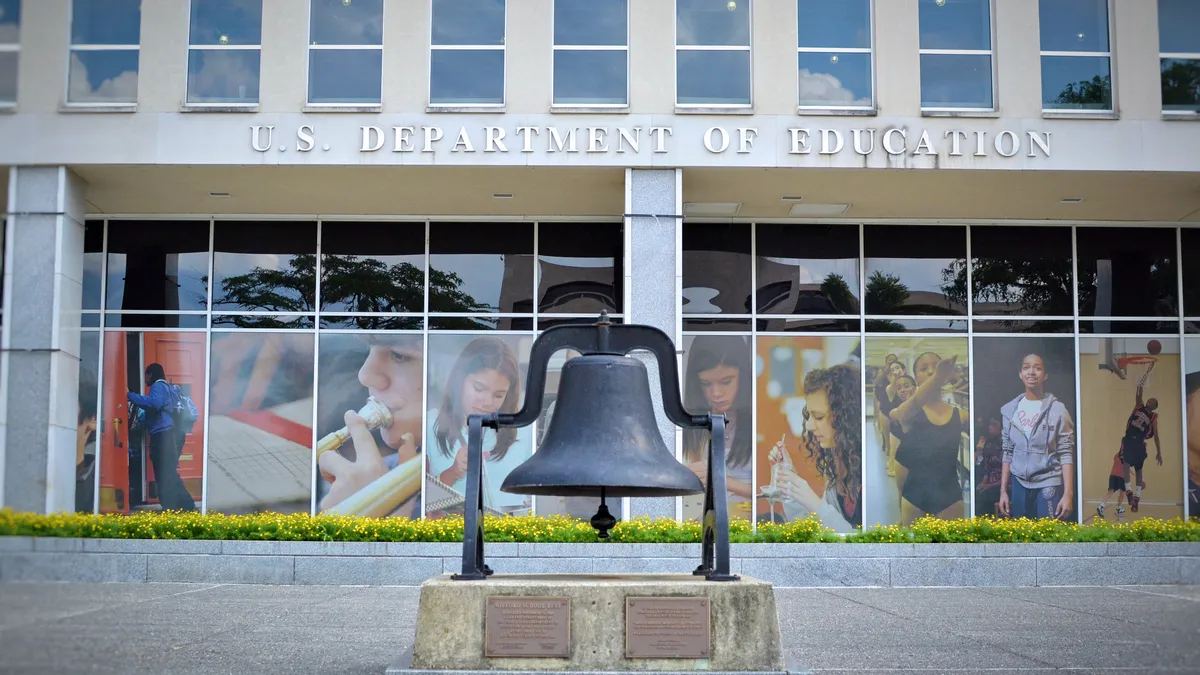Dive Brief:
- The U.S. Department of Education is making $307.5 million in discretionary grants available to states through two competitions designed to inspire innovation during the coronavirus crisis. The funds, announced Monday by U.S. Secretary of Education Betsy DeVos, are aimed at building "adaptable, innovative learning opportunities" K-12 and post-secondary students.
- The $180 million Rethink K-12 School Models Grant is meant to facilitate innovative ways to expand student access to K-12 education and meet learning needs during the coronavirus pandemic and future disruptions. The categories for microgrants for families so they have needed technology, virtual learning and course access programs, and novel remote learning programs that ensure students continue learning.
- The $127.5 million Reimagining Workforce Preparation Grant program is aimed at postsecondary and work-based learning programs focusing on preparing future employees for a new workforce, as well as supporting entrepreneurs and small businesses. The grants will be evaluated by independent peer reviewers.
Dive Insight:
In awarding the grants, the department will consider the coronavirus’ impact on a state, as is Congress’ intention for the money. However, the presence of the grants indicate other criteria will also be considered. Forty of the 100 points of the rubric relate to a state’s coronavirus cases and how it transitioned to online learning.
This solution has its critics.
American Federation of Teachers President Randi Weingarten blasted the plan, accusing DeVos of using the limited funds to turn schools into market opportunities for businesses and offering families vouchers that divert funds away from public education.
“Our country’s educators miss their students; they want support and guidance on how to engage and connect with their kids while they remain physically distant and plan for how they can return safely to the physical classroom,” she said in a statement.
Rep. Rosa DeLauro (D-Connecticut) also suggested DeVos is exploiting emergency fund relief legislation by including her own priorities, which are not outlined in the CARES Act.
The coronavirus pandemic has created an unprecedented disruption to the nation's school model, which has long been largely reliant on teachers instructing students face-to-face and delivering content while learners sit in rows of desks in a physical classroom. The grant competitions could inspire schools, districts and states to think outside of the box on this front.
Most educators expect at least some remote instruction will still be taking place this, and perhaps the next, school year. But so far, the transition for students has been difficult. Students struggle with distractions and, sometimes, even staying awake during “class.” Short, bite-sized content models like those presented by platforms like Tik Tok have been suggested as inspiration for teachers to build learning experiences through online platforms.
But many districts have also had to overcome home internet access gaps for low-income families before an equitable continuation for learning can even be considered. And the issue is compounded further in rural districts where local infrastructure might not be in place to make service available even for families who can afford it. Better fortifying education for future disruptions will necessitate, at a basic level, addressing these inequities first.












